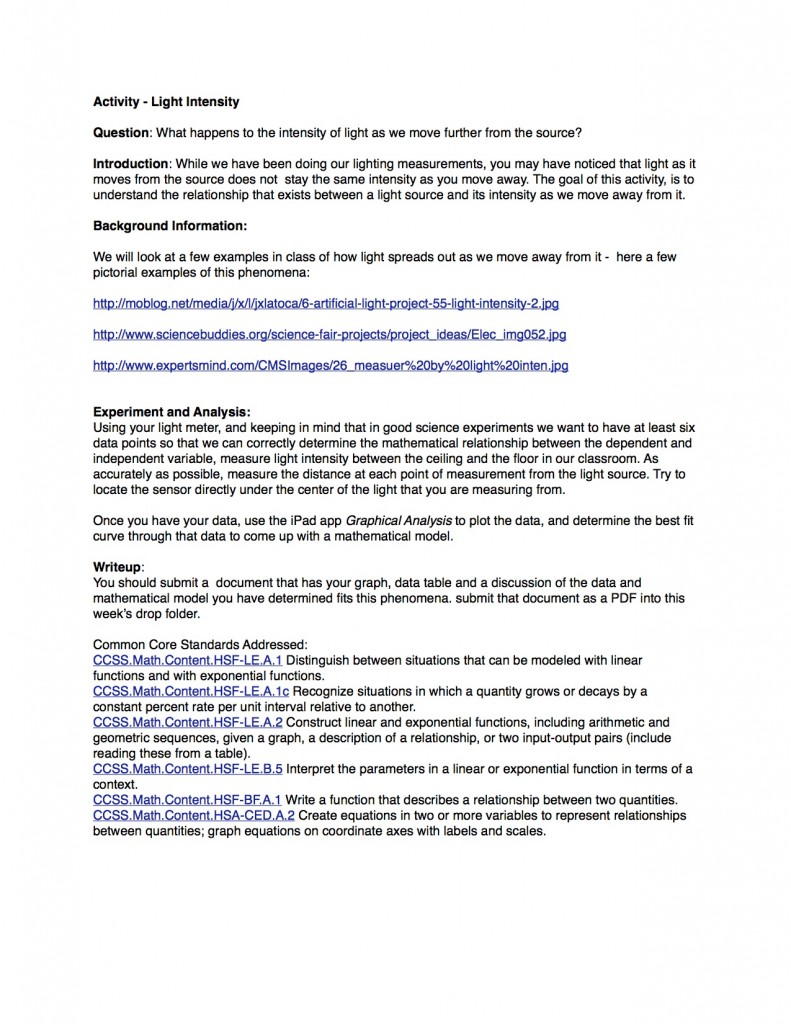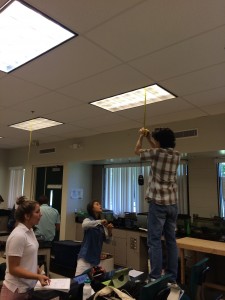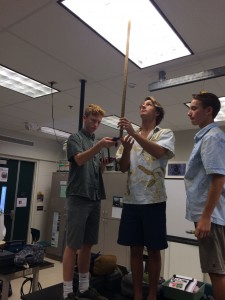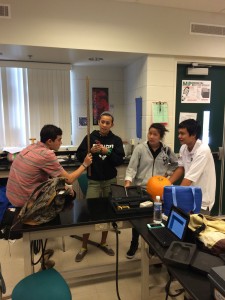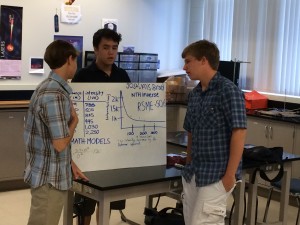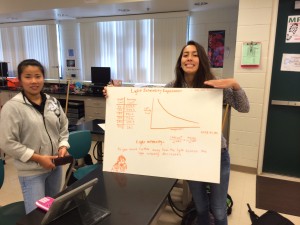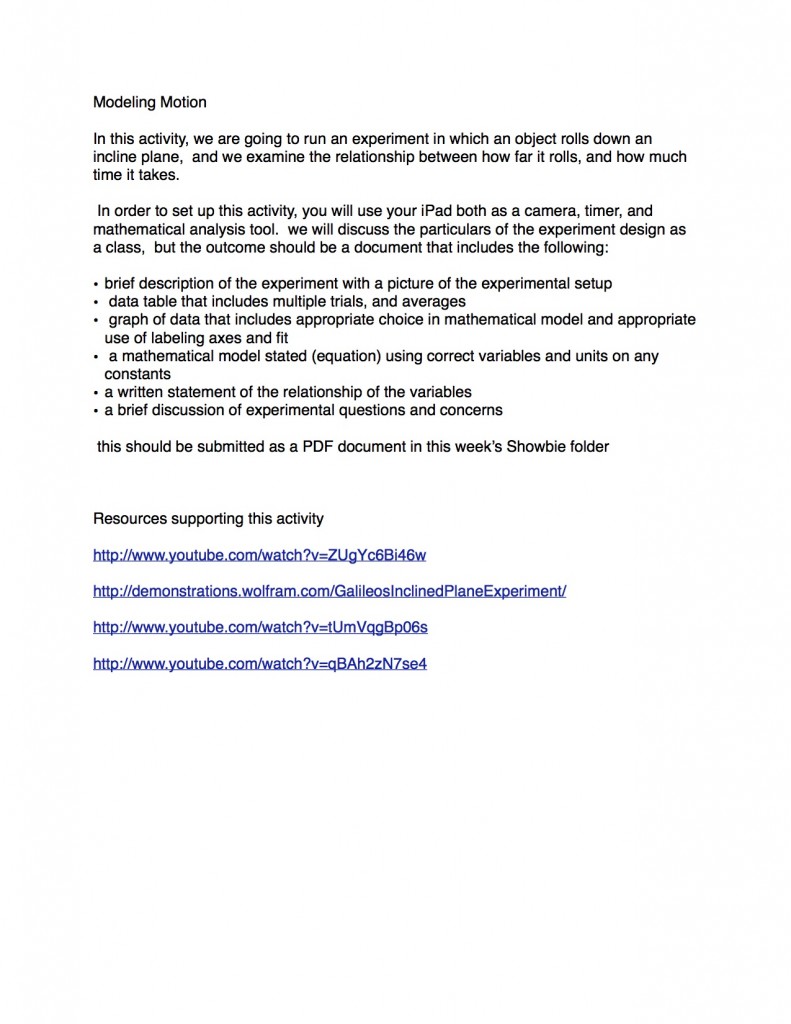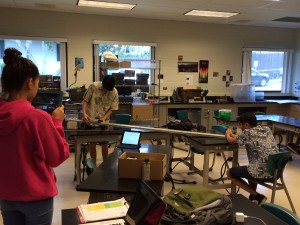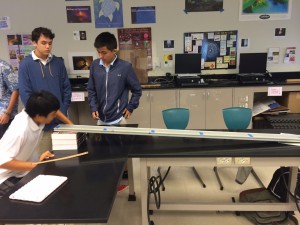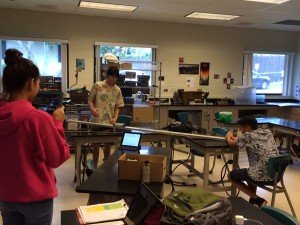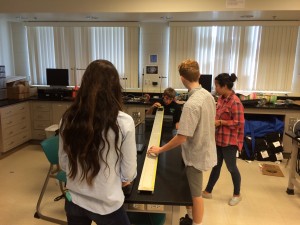Continuing to Rethink Math Design on light and on motion
Over the past two weeks, a couple of different opportunities arose to rethink the way to approach the understanding and application of modeling mathematical functions like inverse relations and quadratic relations. One of my goals is to tie these inquiries to work we are doing that is authentic, but when that is not possible, to at least root it in a real world situation or phenomena.
On Light
Over the past 2 months, our MPX 10 students have been learning the skills to complete successful energy audits (more on that in another post) and one of the pieces for that is examining lighting in spaces and judging not just the cost (determined by wattage of bulbs and frequency of use) but also whether there are options to “de-lamp” in situations where there are too many bulbs causing spaces to be overly bright. Students learned how to use a light meter, terms like luminosity, intensity, units like lumens, lux and footcandles and what appropriate light levels should be.
In the midst of this, it became clear that we could examine the relationship between light intensity (in lux) and distance which was a natural fit for our work. The activity sheet below was designed to have students investigate this phenomena. I have converted it into a jpg so it is readable through this web page:
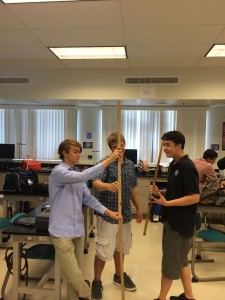
This investigation was real world, because there were all kinds of design issues – how far and what intervals to measure, working between scale levels in the meter, effects of ambient light and reflection from nearby surfaces. In the end there was a clear inverse relationship detected, but 4 different math models arose:
I = a/d — an inverse relationship
I = a/d^2 — an inverse square relationship
I = ad^n — a power relationship where n was a negative number between -6 and -2
I = a/d^n + b — a nth inverse relationship – most students got n=-2 – an inverse square relation
This really gave us two excellent opportunities for discussion that I have not anticipated!
I had the students whiteboard in their groups their data sets so that we could have a discussion as assigned to the community about our findings. Some of that work here:
First of all, in considering experimental design, even though in general we agreed that light intensity decreased as distance increased we needed to consider what it meant that 4 different solutions arose. Error from ambient light greatly affected the results and was difficult to control for.
More importantly, the general idea in science that we should look for simple relationships needed to be addressed when some groups were stating relationships like I = a/d^.621
Secondly, the opportunity to discuss the series of curves generated by the functions list above let us discuss why I = a/d^n + b is a more general form of the other functions. Even though we didn’t go into the complete depth I would have liked on this, it will lead to a better understanding of how to find form and function in real data that we will continue to loop back to all year.
Here are a few summary documents (pdf format) by students in the class:
On Motion
Although we will continue to work on our energy auditing with community members, we are moving on to understanding motion which serves two purposes – kinematics, the study of how things move and dynamics, the study of why things move. These core physics topics have been shown for many years to be the fundamental gateway for students entering college that need to take physical science whether it be engineering, medical school, architecture for example. To that end, our next round of activities will focus on having students understand motion, with the goal of designing a project that we choose as a class that will help us explain motion.
Beautifully tied to this, is the mathematics of kinematics, which involves multiple representations of polynomials and quadratic’s which are significant part of algebra 2.
To get us started in examining these mathematical underpinnings, we conducted an experiment last week in which students measured distance and time for an object rolling down an inclined plane. The activity sheet, which is not as well developed that some of the others I’ve done is below:
One of the things that excited me about conducting this experiment, was rethinking the design of this traditional kinematics investigation. Usually, timing the motion requires using computer aided systems like a photo gate, or a tickertape. As I was thinking of ways to quickly collect accurate data, I was wishing that the camera on the iPad inserted timecode, and then realized that if students filmed the phenomena within iPad timer in view, they could slow down the motion and measure the times accurately by reading off clock measures as the object slid down the inclined plane.
Here are a few photos of the experiment in action:
keeping in mind that the goal of experiment was really twofold:
begin an understanding of accelerated motion which will tie to our working kinematics
examine relationships that pose interesting quadratic challenges to investigate mathematically
the data lends itself beautifully to both of these goals, and we will unpack their findings this week – but here is a preview of what a one of first draft writeups looked like already:
onward and upward!

